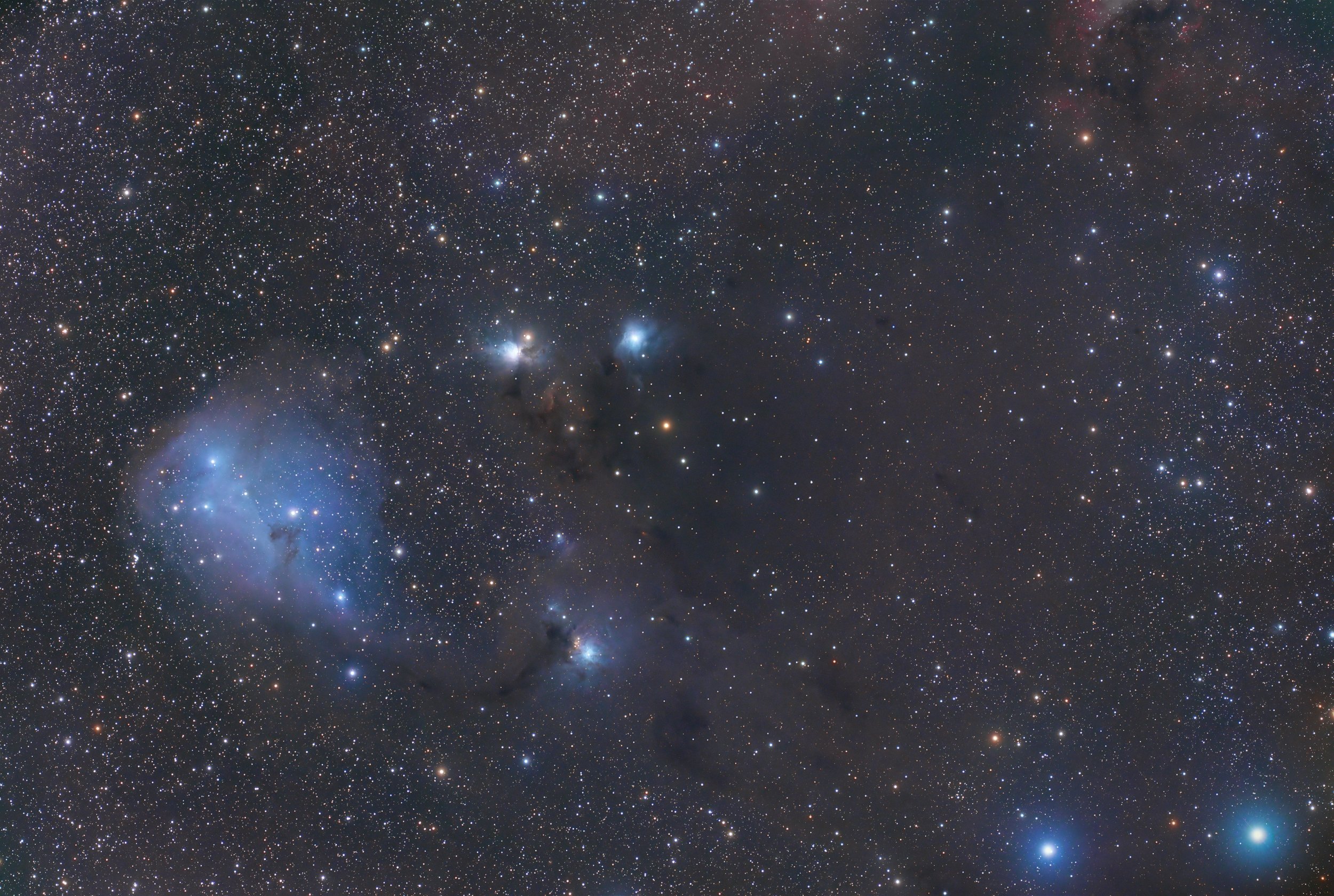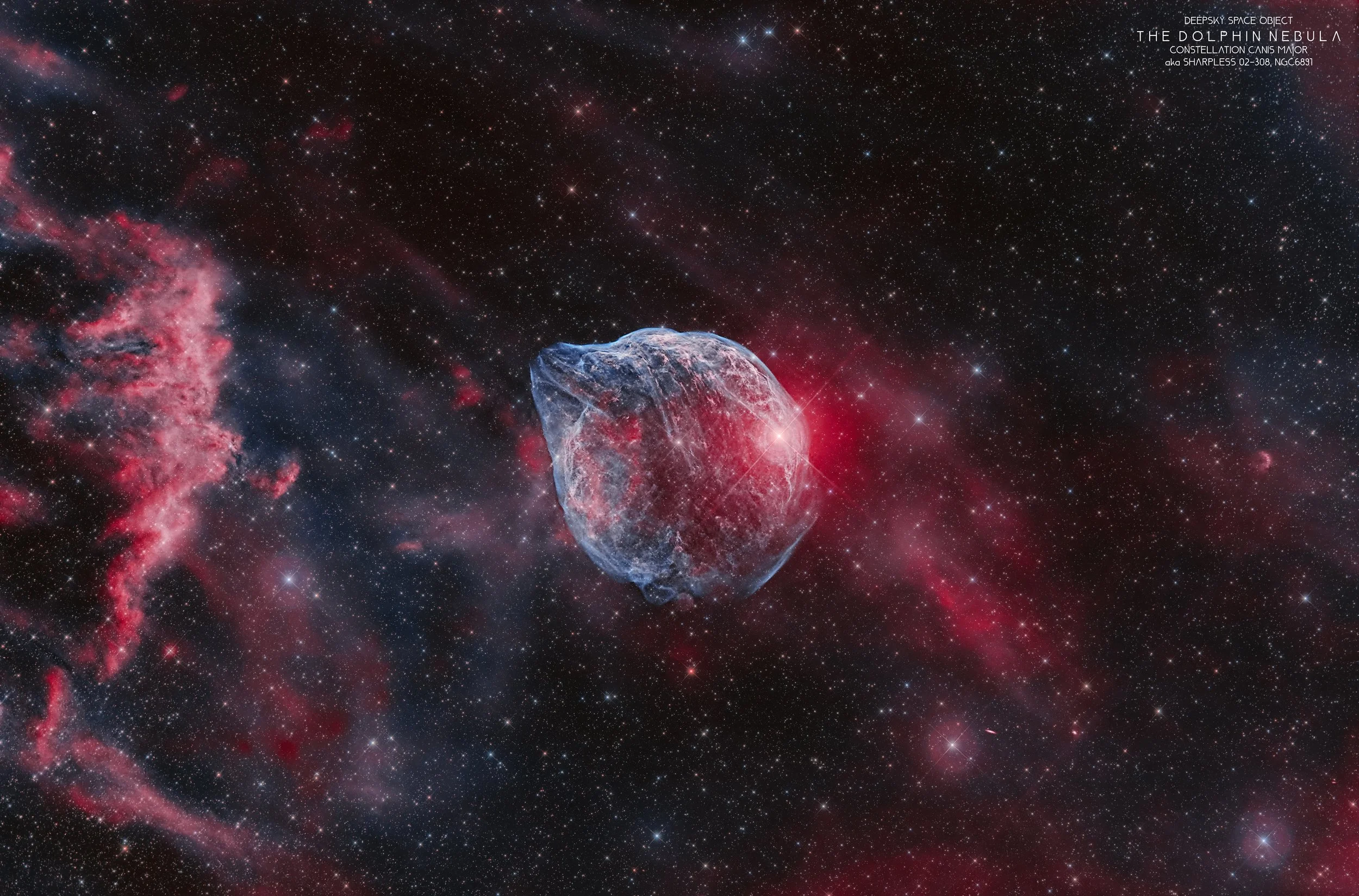
AAPOD2 Image Archives
Sh2-308 – The Dolphin Nebula
Sh2-308, also known as the Dolphin Nebula, is a large, faint emission nebula located in the constellation Canis Major, approximately 4,500 light-years away. This expansive bubble-shaped structure is formed by the strong stellar winds of the Wolf-Rayet star EZ Canis Majoris (EZ CMa), which is shedding its outer layers in the final stages of its evolution. The nebula's predominant oxygen emission gives it a characteristic bluish hue, contrasting against the surrounding interstellar medium.
Expanding at nearly 60 km/s, Sh2-308 spans over 60 light-years in diameter, making it one of the largest Wolf-Rayet bubbles known. Its tenuous gas shell, primarily composed of ionized oxygen, offers a glimpse into the late evolutionary stages of massive stars before they eventually explode as supernovae. Capturing this nebula requires long integration times and narrowband imaging, particularly in OIII, to reveal its faint and complex bubble-like structure.
Sh2-308: The Dolphin-Head Nebula
Sh2-308, also known as the Dolphin-Head Nebula, is a striking bubble of ionized gas in the constellation Canis Major, located approximately 4,500 light-years from Earth. This delicate structure is the result of intense stellar winds emanating from a massive Wolf-Rayet star at its center, sculpting the surrounding material into a luminous shell. The faint blue glow is dominated by oxygen-III emissions, which shine brightly in the ultraviolet light of the central star.
Captured from Rio Hurtado, Chile, using a remote commercial observatory, this view reveals the ethereal beauty of Sh2-308’s expanding shell. Spanning nearly 60 light-years, the nebula is a transient structure in the cosmos, lasting only a few tens of thousands of years. Its intricate shape and soft glow provide a unique glimpse into the life cycle of massive stars and the dynamic processes that shape the interstellar medium.
The Dolphin Nebula (SH2-308)
The Dolphin Nebula, also known as Sh2-308, is an emission nebula situated in the constellation Cassiopeia. This striking nebula gets its name from its appearance, as the arrangement of gas and dust creates the visual impression of a dolphin leaping through space.
Sh2-308 is illuminated by the bright, massive star HD 313571, which is at the heart of the nebula. The radiation and stellar winds from this central star interact with the surrounding interstellar material, causing it to glow in various colors. The nebula's intricate structures, shaped by the powerful forces at play, make it a captivating target for both visual observation and astrophotography.
Studying the Dolphin Nebula provides astronomers with insights into the processes of massive star formation, the dynamics of ionized gas in space, and the interactions between stars and their cosmic surroundings. As an aesthetically pleasing celestial object, the Dolphin Nebula serves as a reminder of the beauty and complexity inherent in the vast reaches of our Milky Way galaxy.
THE DOLPHIN NEBULA
In a captivating astronomical revelation, the Dolphin Nebula emerged as a radiant masterpiece against the backdrop of space. Located within the constellation Cassiopeia, this emission nebula's intricate tendrils of glowing hydrogen gas depicted a celestial aquatic scene reminiscent of a leaping dolphin. The intense radiation from nearby stars sculpted these ethereal formations, offering a mesmerizing testament to the profound interplay between stellar processes and the shaping of cosmic landscapes. The Dolphin Nebula stood as a poetic reminder of the artistry innate in the universe, weaving science and imagination into a single, breathtaking vision.





